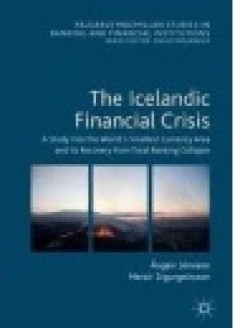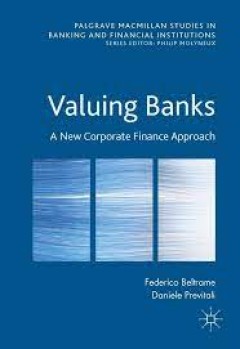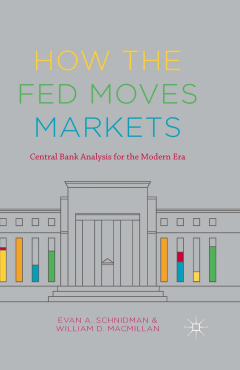Filter by

The Political Economy of Fiscal Consolidation in Japan
This book investigates the reasons for persistent public deficits and delayed fiscal reform in Japan, placing a special emphasis on political economy aspects. Japan is confronted with the need to pursue fiscal discipline for fiscal consolidation and implement structural reforms for reorganizing fiscal expenditures. Focusing on particular policy fields including social security, female labor sup…
- Edition
- -
- ISBN/ISSN
- 978-4-431-55127-0
- Collation
- XIII, 195
- Series Title
- Advances in Japanese Business and Economics
- Call Number
- -

Non-Knowledge Risk and Bank-Company Management:The Role of Intangibles in Rat…
In the current economic scenario, the intangible assets contribute significantly to the construction of the competitive positioning of a company. It follows that this intangible information must be appropriately considered in the internal rating system (IRSs). Currently key aspects of business risk and operational risk such as potential for growth, competitive capabilities, core competencies, r…
- Edition
- 1
- ISBN/ISSN
- 978-1-137-49712-3
- Collation
- XII, 241
- Series Title
- Palgrave Macmillan Studies in Banking and Financial Institutions
- Call Number
- -

What Is Health Insurance (Good) For? An Examination of Who Gets It, Who Pays…
This informative volume synthesizes the literatures on health economics, risk management, and health services into a concise guide to the financial and social basics of health insurance with an eye to its wide-scale upgrade. Its scope takes in concepts of health capital, strengths and limitations of insurance models, the effectiveness of coverage and services, and the roles of healthcare provid…
- Edition
- -
- ISBN/ISSN
- 978-3-319-43796-5
- Collation
- XIII, 271
- Series Title
- -
- Call Number
- -

Alessandro Torlonia: The Pope’s Banker
This book provides a vivid biography of a towering Italian banker, pioneer and entrepreneur. It weaves the entrepreneurial ventures of Alessandro Torlonia (1800-1886) through the narratives of business and politics in the Nineteenth century, the growth of European financial markets and the decline of Papal power during the Italian Risorgimento. The discussion is founded in rigorous historical r…
- Edition
- Ed. 1
- ISBN/ISSN
- 978-3-319-41998-5
- Collation
- XV, 269
- Series Title
- Palgrave Studies in the History of Finance
- Call Number
- 332.4 FEL a

The Icelandic Financial Crisis
This book presents a detailed account of Iceland’s recovery from the tumultuous banking collapse that overturned its financial industry in 2008. Early chapters recount how Iceland’s central bank was unable to follow the quantitative easing policies of the time to print money and save the banks, while serving the world´s smallest currency area. The book goes on to explore how the government…
- Edition
- -
- ISBN/ISSN
- 978-1-137-39455-2
- Collation
- XVI, 349
- Series Title
- Palgrave Macmillan Studies in Banking and Financial Institutions
- Call Number
- -

Venture Capital and the Inventive Process VC Funds for Ideas-Led Growth
The inventive process is the most important driver of economic growth. Venture capital (VC) funds have contributed a small, but critical, part to the inventive process. VC funds boost the inventive process by selecting a small number of radical ideas out a large flow of ideas and invest in their testing, development and commercialization. They bring together capital from general savings, manage…
- Edition
- -
- ISBN/ISSN
- 978-1-137-53660-0
- Collation
- XIV, 123
- Series Title
- -
- Call Number
- -

Valuing Banks A New Corporate Finance Approach
This book aims to overcome the limitations the variations in bank-specifics impose by providing a bank-specific valuation theoretical framework and a new asset-side model. The book includes also a constructive comparison of equity and asset side methods. The authors present a novel framework entitled, the “Asset Mark-down Model”. This method incorporates an Adjusted Present Value model, whi…
- Edition
- -
- ISBN/ISSN
- 978-1-137-56142-8
- Collation
- 19 b/w illustrations
- Series Title
- -
- Call Number
- -

How the Fed Moves Markets{ Central Bank Analysis for the Modern Era
Central banks have a profound impact on financial markets, and investors struggle to keep informed about their complex policy decisions. Technological and financial developments have transformed the US Federal Reserve Bank from a financial black box into a vocal, increasingly transparent institution—and the result is such a wealth of textual data that clues to future policy decisions may be l…
- Edition
- -
- ISBN/ISSN
- 978-1-349-56298-5
- Collation
- X, 198
- Series Title
- -
- Call Number
- 330 SCH h

The European Banking Union
Why did European policy-makers introduce the Banking Union? Which are its main features? How does it affect banks and their customers? This book tries to answer these questions, by providing a clear description of the building blocks of the banking union, and by discussing the issues that still remain unanswered.
- Edition
- -
- ISBN/ISSN
- 978-1-137-56314-9
- Collation
- XIII, 136
- Series Title
- Palgrave Macmillan Studies in Banking and Financial Institutions
- Call Number
- -

The Book of Payments
This book examines the nature of retail financial transaction infrastructures. Contributions assume a long-term outlook in their exploration of the key financial processes and systems that support a global transition to a cashless economy. The volume offers both modern and historic accounts that demonstrate the constantly changing role of payment instruments. It brings together different theore…
- Edition
- -
- ISBN/ISSN
- 978-1-137-60231-2
- Collation
- XXXVI, 416
- Series Title
- -
- Call Number
- -
 Computer Science, Information & General Works
Computer Science, Information & General Works  Philosophy & Psychology
Philosophy & Psychology  Religion
Religion  Social Sciences
Social Sciences  Language
Language  Pure Science
Pure Science  Applied Sciences
Applied Sciences  Art & Recreation
Art & Recreation  Literature
Literature  History & Geography
History & Geography